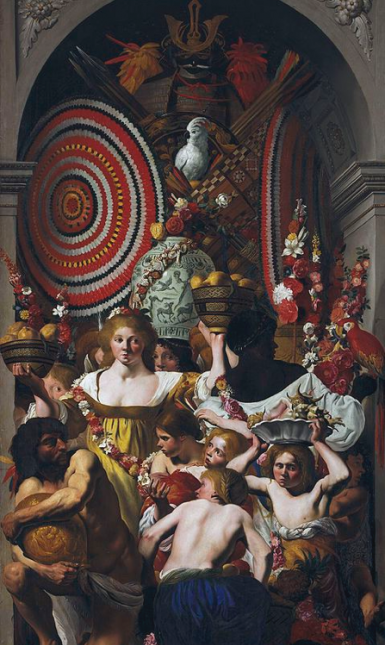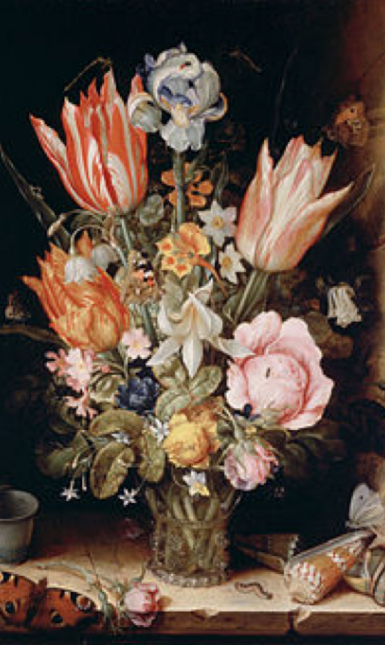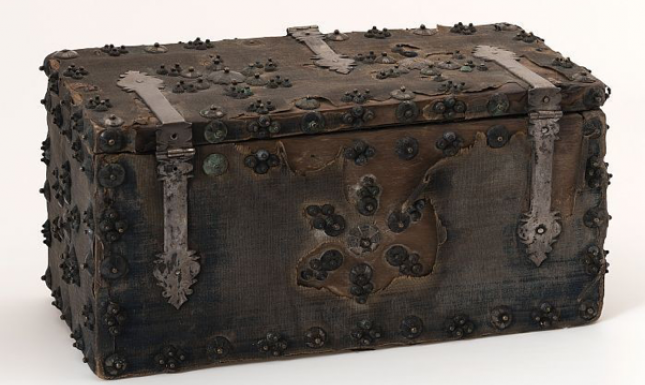Piet Hein & Porcelain as Pillars of the Dutch Republic?
On 28 November 2019 Professor Claudia Swan (Northwestern University) gave a lecture entitled “Stately furnishing and prized possessions: exchange, piracy and collecting in the Golden Age.” She argued that the Dutch taste for porcelain influenced the formation of the young Dutch Republic.
In the sixteenth century courtly collections were supplied with precious porcelain by Portuguese and Spanish merchants. At the turn of the seventeenth century, this changed dramatically after the Dutch capture of the Portuguese vessel San Iago, loaded with luxury goods from South and East Asia. To cut a long story short Claudia Swan argued the taste of porcelain was born of loot. After nearly three days of fighting the Portuguese surrendered to the Zeelanders. To prevent the San Iago from sinking most of the cargo was thrown overboard. A third Dutch ship, the Witte Arend arrived and reported that the waters were something of a “floating bazaar”. The looted or fished up merchandise was later inventoried in Middelburg and sold and/or distributed among the dignitaries. Thanks to the San Iago, the Dutch public saw porcelain for the first time in appreciable quantities.

The VOC (United East Indies Company) was founded in 1602 when the Dutch joined the trade in Asia. Between 1602 – 1623, the VOC captured almost 200 Portuguese ships with a combined loot value of roughly ten million guilders. Without the income of this so-called “free-commerce”, the VOC would have gone bankrupt during its early years. Now, shareholders, captains, local and national authorities were able to create rich collections of porcelain. Some cups painted by Christoffel van den Berghe in his Still Life appear to be the same type of porcelain found in the shipwreck of the Witte Leeuw, a VOC ship that sank in 1613.

In 1604 Admiral Jacob van Heemskerk looted another Portuguese ship, the Santa Catarina, acquiring a booty of approximately 100,000 pieces of porcelain as well as Chinese silks, furniture, shells, spices, etc. These looted rarities changed the world of goods and the common taste in the Netherlands. It also changed the answers to some legal questions. Hugo Grotius wrote the treaties ‘Mare Liberum’ and ‘De Jure Praedae’, which, to cut another long story short, can be summarized in three words: license to piracy.
Inspired by the profits derived from trade in the East and stimulated to wage war on all possible fronts with the King of Spain, the Dutch State established the West Indies Company (WIC) in 1621. In the following twenty years the WIC captains captured nearly 600 Spanish commercial vessels including its most famous conquest, the looting of the ‘Silver fleet’ by Vice-Admiral Piet Hein, estimated over eleven million guilders (roughly 300 million euros today).

The loot from the East and the Western trade piled up in the cabinets of the rich and famous, ironically called the ‘gifts’ by Jacob van Campen in his painting. The collection of Amalia van Solms, the wife of the Stadholder Frederik Hendrik, must have been legendary. Displayed and presented in a room size cabinet it reflected the power of the court. The proceeds of this piracy or not, for sure enabled the war with Spain and provided a solid foundation for the formation of the new state, the Dutch republic. The painting of Jacob van Campen for the Stadholder’s Oranjezaal represents it all!
Margaret C. Storm mastered in Clinical Psychology at the Free University, Amsterdam in the seventies of last century. She has founded a practice in 'Psychotherapy and Biofeedback' as wells as a company in 'Training and Consultancy'. Now, in the autumn of life, she enjoys a Master study Arts & Culture together with a study of Egyptology.


0 Comments